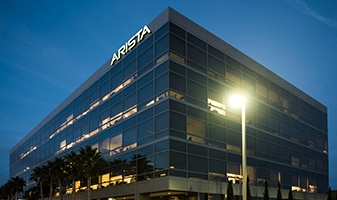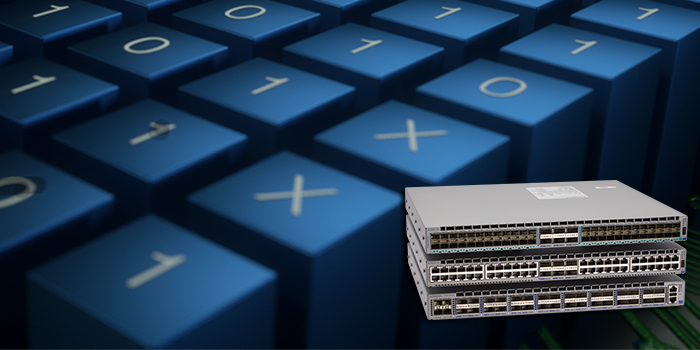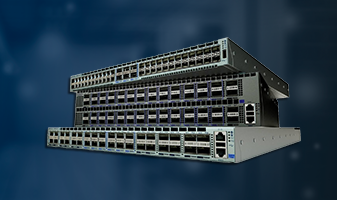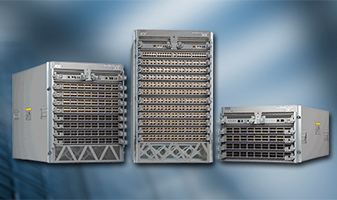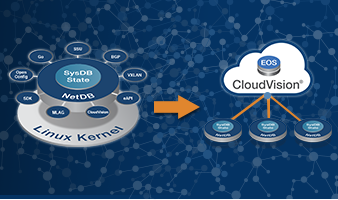Tap DANZing for Visible Cloud Networking
Networking is running blind. It is akin to driving a car in the fog at night without street lights, signs or a navigation system. Simply put, it’s a scary visibility problem, and it impacts the security and availability of the network. When coupled with massive shifts to virtualization, containerization, cloud-native applications and unstructured data, the insatiable telemetry demand is exponential. Every architect is looking for modern analytical methods of networking to gain visibility for millions of devices, data or events efficiently and consistently.
The New Tech Economy in Cloud Networking
In the 1950s, the introduction of jet engine technology revolutionized air transport, allowing for the transport of goods and people across oceans far more quickly than with traditional propeller-based aircraft. A new airline industry on a global basis arose from the jet engine revolution.
Beyond Scale to Flexible Cloud Networking
In the early 2000’s a new generation of smartphones revolutionized the cell phone industry, eliminating the market for “flip phones,” introducing new tools and completely redefining “phones” to universal internet devices. New companies rose and old ones adapted or failed. In 2015, a new generation of electric cars (Tesla being the most well-known), were introduced and drove the next wave of technology transitions, replacing gas-guzzling cars in many households. Consumers and traditional car companies worldwide are now embracing the new technology.
The State of Telemetry in Cloud Networking
The hype of Software Defined Networking (SDN) and its associated analytics is alive and well. Many are advocating changing the way monitoring is done. Are we ready for re-invention? How should one react? Or should we plan better? What happens to decades of network management that are habitual? Legacy vendors understandably feel defensive, declaring new marketing visions and paradigms, while new and innovative vendors are delivering real functionality that meets customer needs! At Arista, we saw the emergence of a need for better visibility and monitoring in 2010, with exponential growth of workloads in the cloud to bring together many forms of telemetry. We have been deploying Arista Tracers with EOS ® for over five years, and now we are entering the next generation of real-time telemetry.Transforming Silos into Universal Cloud Networking
We have witnessed a massive shift in the way applications are built and deployed, moving away from siloed IT to seamless workloads, workflows and work-streams. This revolution has changed the fundamental way that networks are architected to enable support of cloud native applications. With these new architectures, one can now automate and provision the entire network with real time agility, ushering in a new class of cloud networks.
The Universal Spine Is Born!
The rapid migration from enterprise to cloud, driven by the economics of scale, the convergence of local and wide-area networking (LAN-WAN), the migration from Fibre Channel to IP storage, the rise of analytics and the emergence of new cloud applications is dramatic. In the past two years, we have witnessed a massive shift in the way applications are built and deployed, moving away from legacy siloed infrastructure to seamless workload mobility. The demands of these new workloads change the way spine networks are reconstructed for cloud networking. As physical compute or storage silos evolve to support cloud applications, one can automate and provision the entire network to handle any workload, workflow or workstream, with real time agility.
Protecting IP or Market Share?
It's tough times on Tasman Drive. Struggling to apply old technology to the new world of cloud computing, Cisco is potentially facing the largest loss of data center market share in its history. We can understand why Cisco would take the battle from the marketplace to the courtroom. What surprises us is the length that Cisco has gone to misrepresent our actions and the nature of the litigation in order to justify their assault.
Next Gen EOS for Cloud-Scale Networking
As we celebrate 2016, and reflect upon Arista’s decade of innovation, the disparity between legacy technology and modern technology is clear, and the gap is widening. Arista is unique in its role as a pioneer in cloud networking. Let us review.
Arista’s Cloud Network Solutions Validated by Market Share Gains
We are very pleased to report a major milestone for Arista Networks. According to the just released Q4’2014 Crehan Data Center Switch Market report, in the high-speed Ethernet switch market (defined as 10G Ethernet and above excluding blade switches) Arista’s port market share in 2014 rose to 9.3%, up from 6.7% in 2013. Our revenue market share for 2014 rose to 7.7% from 5.4% in 2013. All of this speaks volumes to the rapidly growing acceptance of our products by customers around the globe.
In the meantime, according to the same Crehan research report, Cisco’s port market share fell from 70.8% in 2013 to 66.1% in 2014, a loss of 4.7%. Cisco’s revenue market share declined from 74.2% in 2013 to 69.3% in 2014, a loss of 4.9% YoY. Again this speaks volumes to the decisions customers are making.
What is going on here? At the high level, it is very simple. Customers are transitioning away from legacy proprietary networking solutions and are embracing Arista’s cloud network architecture, a fully standards based solution that offer unparalleled scale, availability and open programmability.
Cloud Networking Has Arrived in Data Centers Everywhere
The Next Generation in Cloud-Scale Networking: The Arista 7500E
Today we are announcing our new 7500E modular switch, the fastest and densest modular switching platform in the industry, enabling cloud networks to scale to over 100,000 servers and millions of virtual machines.
The Arista 7500E is a remarkable 3X better than its predecessor. It offers 3X the number of ports, 3X the fabric bandwidth, 3X the packet buffer, 3X the supervisor performance, and 3X the power-efficiency, without a chassis or power upgrade.
But the real story of the 7500E it that it enables customers to build a universal cloud networking infrastructure for the worldʼs largest data centers that can handle even the most demanding workloads with ease.
Letʼs take a look inside this remarkable new switch.
3X the Fabric Bandwidth
The 7500E has 3.84 Tbps fabric bandwidth per slot, or 30 Tbps per 8-slot chassis, three times the bandwidth of the first generation 7500.
3X the Port Density
The 7508E supports 1152 10G, 288 40G or 96 100G wire-speed ports in a 11U chassis, the highest port density in the industry and three times the number of ports of the first generation 7500.
3X the Packet Buffer
The 7500E comes with a world-record 144 GByte of packet buffer per 8-slot chassis, Continue reading
The March to Merchant Silicon in 10Gbe Cloud Networking
The inevitable march towards merchant silicon for Ethernet switching is continuing with the announcement from Intel today that it is acquiring Fulcrum Microsystems. Fulcrum of course the silicon vendor that is the core of our low-latency switch family that is the most widely used switch across the world for high-frequency trading.
I wanted to share my thoughts on what this means for the industry going forward.
10 Gigabit Ethernet – the time is right:
First, virtually every new 10 Gigabit Switch announced this year is based on merchant silicon. We at Arista, of course, have been at the forefront of bringing multiple merchant switch architectures to market, but why all of the sudden this stampede?
The simple answer is that the technology advantages of merchant silicon in terms of throughput and cost-performance are so overwhelming compared to legacy platforms based on proprietary silicon designs, that merchant silicon is where the market is going.
New data centers that are built for the cloud require vastly more network scalability than the data center of yesterday. Throughput of servers has advanced at the speed of Moore’s law. The next generation of Intel server will have more than 100 times the throughput of the Continue reading
Arista 7500: the Fastest and Greenest 10 Gigabit Ethernet Switch
We are witnessing a major shift from traditional enterprise data centers to much larger warehouse-scale cloud data centers. This is driven by the economics of scale and the benefits of cloud computing, and is happening for both for public and private clouds.
These large data centers need a much higher performance networks that bears little resemblance with traditional enterprise networks. A cloud data center network needs to interconnect many thousands of servers with predictable bandwidth and low-latency.
Our original goal was a switch that could connect 10,000 servers with a simple, 2-stage network, that would deliver predictable Gigabit performance for each server, and do this at a price point that is compatible with web and cloud business models. Just to be clear, such a network requires 10 Terabits/second throughput (10,000 x 1 Gbps), active-active load-sharing redundancy to avoid any single point of failure, and the ability to run 24×7 since there are no maintenance windows in the cloud world.
I am very pleased with the product that resulted from this development, the Arista 7500 data center switch. It turned out really great, even better than we originally anticipated.
The Arista 7500 switch is the highest throughput 10G Ethernet switch in Continue reading
The Silicon Choice for Cloud Networking
These days there is much discussion whether switches or routers should be built with proprietary custom ASICs or standard “merchant silicon” chips. At one level, the question is “Why does it matter?” After all, networking vendors have been building custom silicon chips since the invention of the LAN switch in the early ’90s.
In my own career, I have led the development of several generations of very high volume network switch silicon. However, even I could not design better silicon switch chips than what is available now on the merchant market. To me this is an inflection point for the industry that is not unlike what happened in the computer industry with the adoption of industry standard architectures.
While CPU and switch silicon architectures differ in many ways, the underlying economics are very similar. In the 1980s and 1990s, CPU architectures flourished: there were MIPS, PowerPC, SPARC, ARM, and X86. Each architecture staked out their position in the market. The RISC architectures led the server market with 64-bit addressing and multi-processing capability, and also focussed on embedded applications. X86 was the standard for desktop computers. However as the years passed, most of the volume growth in the market has Continue reading

